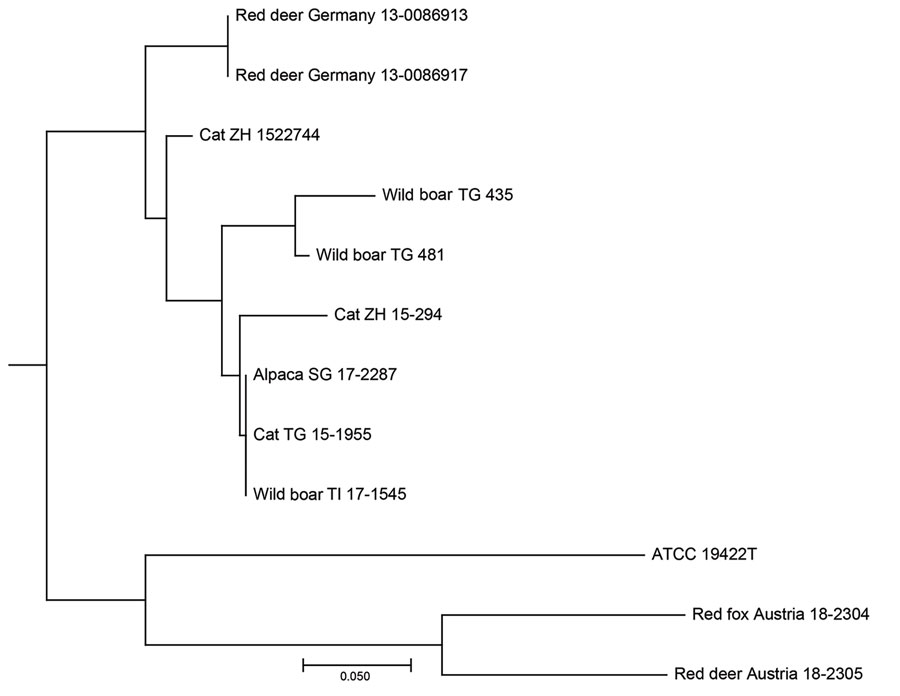Volume 27, Number 8—August 2021
Synopsis
Mycobacterium microti Infections in Free-Ranging Red Deer (Cervus elaphus)
Figure 4

Figure 4. Neighbor-joining tree based on the copy numbers of 24-loci mycobacterial interspersed repetitive unit variable-number tandem-repeat analysis derived from 11 Mycobacterium microti clinical isolates and type strain M. microti Reed ATCC 19422T in study of tuberculosis caused by M. microti in red deer, Austria and Germany. We calculated the tree using the MIRU-VNTRplus server (https://www.miru-vntrplus.org; Appendix) and exported it using MEGAX version 10.11 (https://www.megasoftware.net). Scale bar indicates substitutions per site.
Page created: May 12, 2021
Page updated: July 18, 2021
Page reviewed: July 18, 2021
The conclusions, findings, and opinions expressed by authors contributing to this journal do not necessarily reflect the official position of the U.S. Department of Health and Human Services, the Public Health Service, the Centers for Disease Control and Prevention, or the authors' affiliated institutions. Use of trade names is for identification only and does not imply endorsement by any of the groups named above.